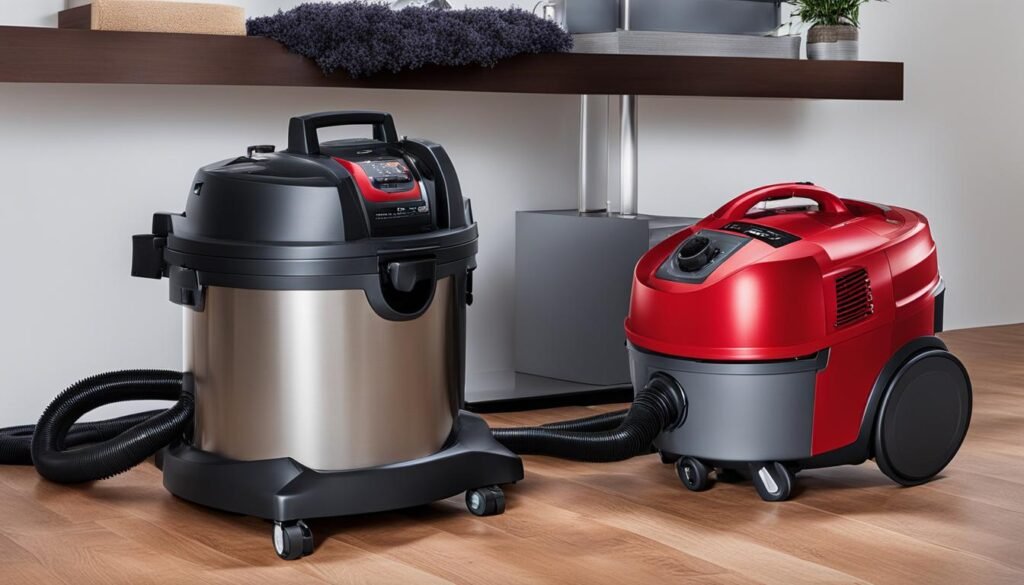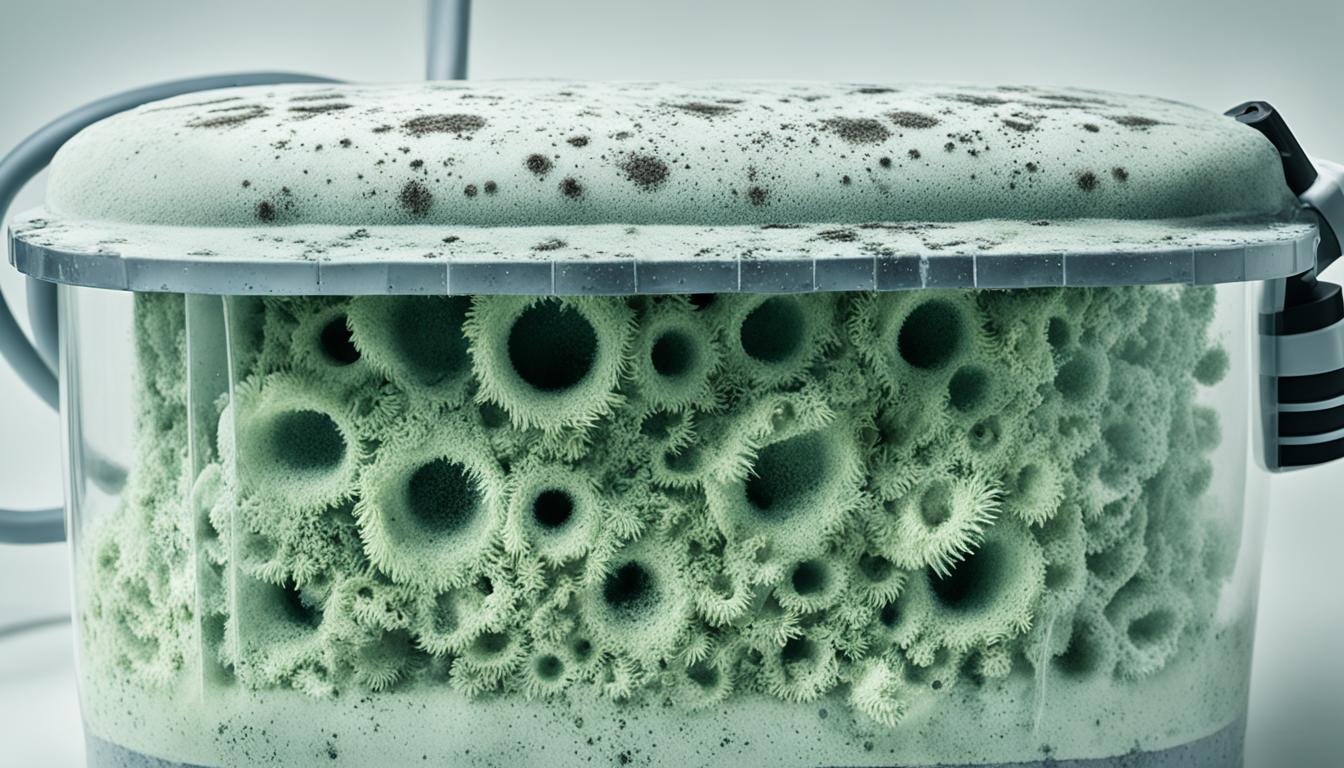Have you ever wondered if mold can grow in a vacuum cleaner? The answer might surprise you. Vacuum cleaners, despite their role in cleaning our homes, can actually provide the ideal environment for mold growth. The dark and moist conditions inside a vacuum cleaner create the perfect breeding ground for mold spores to thrive.
Mold needs a few key components to grow: a dark environment, a source of moisture, and nutrients. Unfortunately, vacuum cleaners can provide all of these conditions. When stored in cupboards or areas without natural sunlight, vacuums create a dark environment where mold can flourish. Additionally, the organic matter that is collected while cleaning serves as a nutrient source for mold.
To prevent mold growth in your vacuum cleaner, it’s important to take some precautions. First, try to expose your vacuum to as little moisture as possible. Avoid vacuuming over wet patches or picking up moist debris. Regularly cleaning your vacuum, both inside and out, is crucial. This includes emptying the collection bag or cylinder and thoroughly cleaning the bottom of the vacuum.
Storing your vacuum in a location with a humidity level below 55% can also help prevent mold growth. Exposure to direct sunlight can help kill mold spores, so consider leaving your vacuum outside for a short period of time after cleaning. By following these steps, you can ensure that your vacuum remains mold-free and help create a cleaner and healthier home environment.
Key Takeaways:
- Mold can grow in vacuum cleaners due to the dark and moist environment they provide.
- Vacuum cleaners stored in cupboards or areas without sunlight can create ideal conditions for mold to thrive.
- The organic matter collected during cleaning serves as a nutrient source for mold.
- To prevent mold growth, minimize moisture exposure, clean the vacuum regularly, and store it in a low humidity area.
- Regular cleaning and maintenance of the vacuum are essential to prevent mold buildup.
Why Does Your Vacuum Have Mold?
Many people are surprised to find mold growing in their vacuum cleaners. However, understanding the reasons behind mold growth in vacuums can help us prevent this issue. Mold can thrive in vacuums due to a combination of factors related to their usage and storage environment.
The inside of a vacuum cleaner naturally accumulates dirt and organic matter from the floors it cleans. This dirt provides the necessary nutrients for mold to grow. Additionally, mold requires a dark environment to thrive, and vacuum cleaners stored in cupboards or areas without natural sunlight can create the perfect conditions for mold growth.
Mold also needs moisture to survive, and vacuums can inadvertently introduce moisture into their inner workings. This can happen when the vacuum collects wet or moist debris during cleaning. Additionally, storing the vacuum in a high-humidity environment can contribute to mold growth.
To prevent mold growth in your vacuum cleaner, it’s essential to take certain precautions. First, make sure to clean your vacuum regularly, removing any accumulated organic matter. Avoid vacuuming over wet patches to prevent moisture from entering the vacuum’s internal components. It’s also crucial to store the vacuum in a location with a humidity level below 55% to minimize the risk of mold growth.
By understanding the factors that contribute to mold growth in vacuums and following preventive measures, you can ensure a clean and mold-free vacuuming experience.
How to Prevent and Clean Mold in a Vacuum
Mold growth in a vacuum cleaner can be prevented by implementing simple preventive measures and regularly cleaning the appliance. By following these steps, you can ensure that your vacuum remains mold-free and your home stays clean and healthy.
Preventing Mold Growth in Your Vacuum
- Avoid picking up moist debris with your vacuum cleaner as it can promote mold growth. Instead, allow wet patches to dry before vacuuming.
- Store your vacuum in a location with a humidity level lower than 55% to inhibit mold growth. High humidity environments provide the perfect conditions for mold to thrive.
- Expose the dust collected inside the vacuum’s container to direct sunlight. Sunlight helps kill mold spores and prevents their growth.
- Regularly empty the collection bag or cylinder to remove any organic matter that can serve as a nutrient source for mold.
Cleaning Mold from Your Vacuum
If you suspect mold growth in your vacuum, it is essential to take immediate action to eliminate it. Here’s how to clean mold from your vacuum:
- Begin by removing all detachable components, such as the collection bag or cylinder, filters, and brushes.
- Spray these components with hydrogen peroxide or rubbing alcohol to kill mold spores.
- Allow the components to air dry completely before reinstalling them in the vacuum.
- Thoroughly clean the bottom of the vacuum cleaner, removing any visible mold or debris.
- Wash or replace the filters to ensure optimal performance and prevent mold from returning.

“Regularly cleaning your vacuum and its components is crucial to preventing mold buildup.” – [Your Name]
Recommended Cleaning Schedule
To effectively prevent mold buildup in your vacuum cleaner, establish a regular cleaning routine. Here is a recommended cleaning schedule:
| Task | Frequency |
|---|---|
| Empty the collection bag or cylinder | After each use |
| Clean detachable components | Every 3-4 months |
| Wash or replace filters | Every 3 months |
By adhering to this cleaning schedule, you can maintain a mold-free vacuum and ensure the efficient performance of your appliance.
Conclusion
Mold growth in vacuum cleaners is a common issue, especially in areas with dark and moist conditions. While some types of mold found in vacuums are relatively harmless, certain strains can produce mycotoxins that pose health risks to sensitive individuals. To combat mold growth and maintain a cleaner and healthier home environment, it is important to implement preventive measures.
Using a HEPA vacuum cleaner can help reduce mold spore emissions, although it may not filter out mycotoxins. Regular cleaning of the vacuum, including detachable components and filters, is crucial in preventing mold buildup. Additionally, taking precautions such as avoiding moisture and storing the vacuum in a low humidity area can help mitigate mold growth.
By following these steps, you can ensure a mold-free vacuum and promote a healthier living space. Regular maintenance and proper cleaning will not only extend the lifespan of your vacuum but also contribute to better air quality in your home. Take control of mold in your vacuum and enjoy cleaner, fresher air with every use.
FAQ
Can mold grow in a vacuum cleaner?
Yes, mold can grow in a vacuum cleaner. Vacuum cleaners provide a dark and moist environment that is conducive to mold growth.
Why does your vacuum have mold?
Vacuum cleaners can have mold due to the nature of their usage and the environment they are stored in. The dark environment inside the vacuum and the organic matter collected during cleaning provide the ideal conditions for mold to thrive.
How can you prevent and clean mold in a vacuum?
To prevent mold growth, avoid picking up moist debris, store the vacuum in a low humidity area, and expose the dust collected inside the vacuum to direct sunlight. To clean mold from a vacuum, remove detachable components, spray them with hydrogen peroxide or rubbing alcohol, clean the bottom of the vacuum, and wash or replace the filters regularly.
Can mold spores be found in vacuum cleaners?
Yes, mold spores can be found in vacuum cleaners, especially if mold has started to grow. Regular cleaning and maintenance can help reduce the presence of mold spores in the vacuum.
Are HEPA vacuum cleaners effective in reducing mold spores?
HEPA vacuum cleaners are designed to capture small particles, including mold spores. While they can help reduce the emission of mold spores, they might not filter out mycotoxins that certain molds can produce.
How often should you clean your vacuum cleaner to prevent mold buildup?
It is recommended to clean the vacuum thoroughly, including detachable components and filters, every 3-4 months. Regular maintenance and cleaning can help prevent mold buildup and ensure the vacuum functions properly.





Leave a Reply